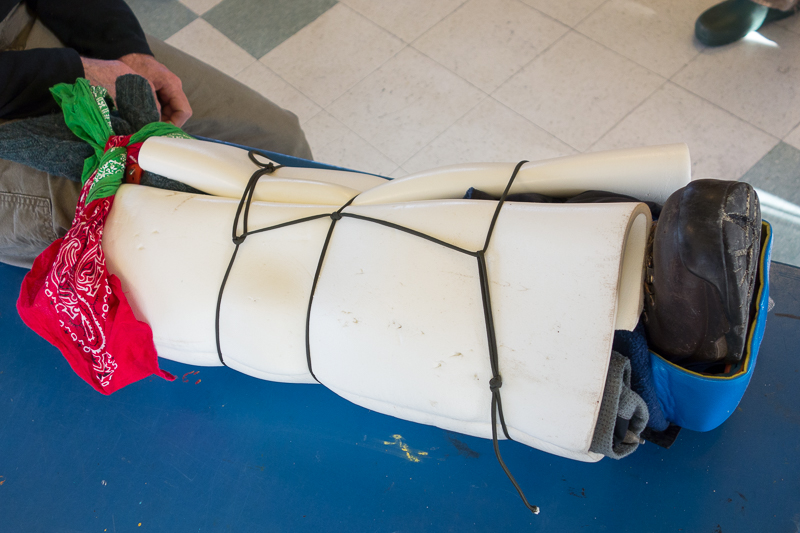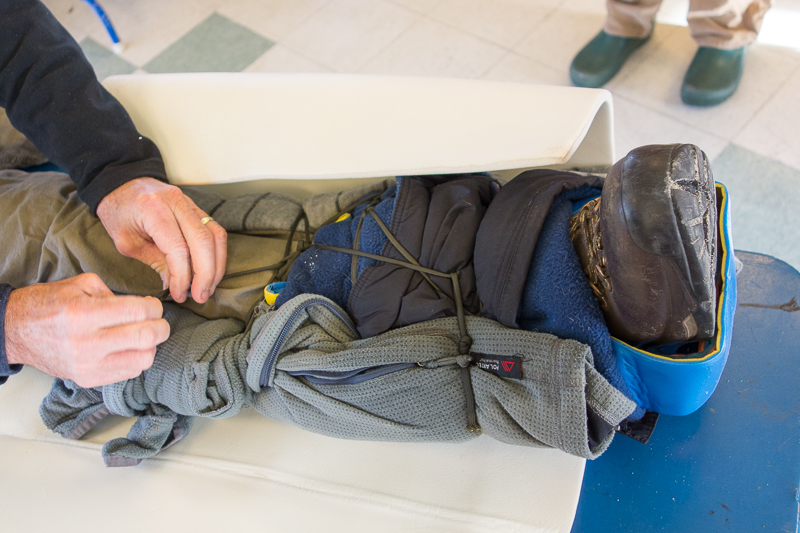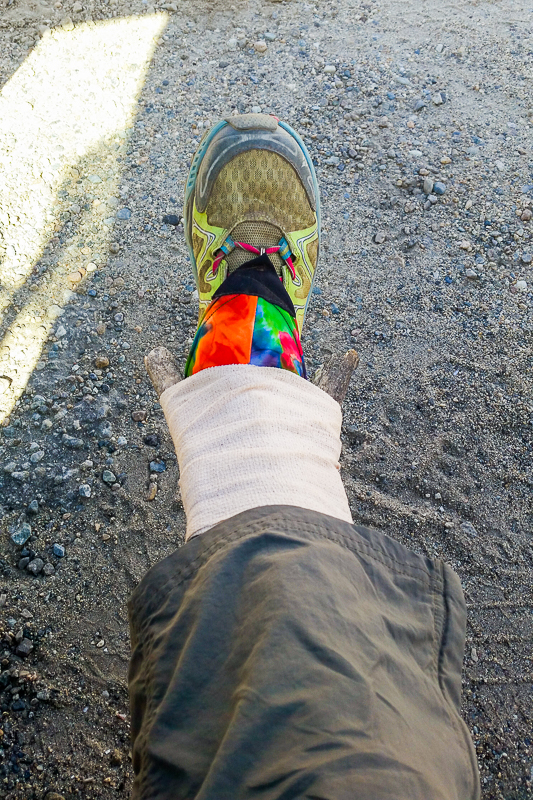It was time for me to get recertified in Wilderness First Aid again so I checked out SOLO‘s schedule and found one happening in Vermont. In addition to taking the class, I could visit Jenn and get a hike in. Perfect!
This was my first time taking a SOLO class and it was great. The instructor had tons of real world experience and anecdotes to share. Yes, there are standard procedures to follow in emergency situations, but you might not be able to follow exactly what’s on paper when you’re out in the field. It was nice to have someone acknowledge that and not be so rigid, as past instructors I’ve had have been.
WFA needs to be recertified every two years. I’ve been lucky in the past two years again in that I haven’t really had any emergency situations to deal with. But without having used the skills, I definitely needed a refresher. The class goes over the same materials every time, but I still learn something new since different takeaways are emphasized. Here are the three things that were most impressed upon me this time around:
1. It’s pretty easy to see an accident coming.
Humans factors such as poor preparation (not having the correct knowledge, skills, and/or equipment), pre-existing conditions (past injuries, etc), and being too goal oriented (summit fever), along with environmental factors such as weather and terrain, can combine to foreshadow the accident. If you stay aware of and constantly reevaluate these factors, risk can be mitigated.
2. Shock is almost always going to result from a severe injury.
The human body is pretty amazing: it sees a threat and compensates for it. Heart rate and respiratory rate increase, sending more blood to the brain and increasing the amount of oxygen in that blood, and peripheral circulation decreases, keeping the blood in the core to support necessary organs. Once the underlying cause is treated, which could be blood loss, heart attack, allergic reaction, septic shock, or even just a scare, the body should resume normal function. However, another function of shock is that it prepares the body to die painlessly: a person in shock isn’t generally aware of obvious injuries or pain, and is not really there mentally. You need to snap them out of it to get their body functioning correctly again because if shock continues for too long, it can kill.
3. Splints should be B.U.F. – Big, Ugly, and Fat.
Musculoskeletal injuries (sprains, strains, and fractures) are the most common injury in the backcountry. They need to be immobilized and splinted so that the injury doesn’t get worse during evacuation, and to keep the victim as comfortable as possible. To that end, use any padding available to make that splint as big, ugly, and fat as possible. Wrap it, tie it, wrap it some more. Even wrap the sticks, tent poles, trekking poles, or whatever else you are using as a stabilizer so that the hardness of the object doesn’t press quite as hard against the injury. Just don’t tie things so tightly that circulation is compromised.

A BUF ankle splint

See how on the inside, even the trekking poles providing stability are first wrapped in clothes before being strapped to the leg
When I broke my ankle on the Colorado Trail, a fellow hiker helped me splint it. We used two sticks and an ACE bandage. The sticks pressing right against my ankle bones hurt, and my foot ended up frequently banging against things as I was carried down the mountain. Some padding would have been very welcome.

Neither big, ugly, nor fat
The next time recertification comes around, I think I will bump up my knowledge with a Wilderness First Responder class. It delves more deeply into all of the topics that WFA skims.


Good pointers! I always say we have avoided injury/illness in the backcountry because so much of it can be prevented. But, there are some things out of your control and it is good to be prepared. I definitely think you should go for the WFR. It was really fun!!!!
nicely done
That is a great course to take. You will never regret it. If I were you, I would keep it current too. XO,
Lee